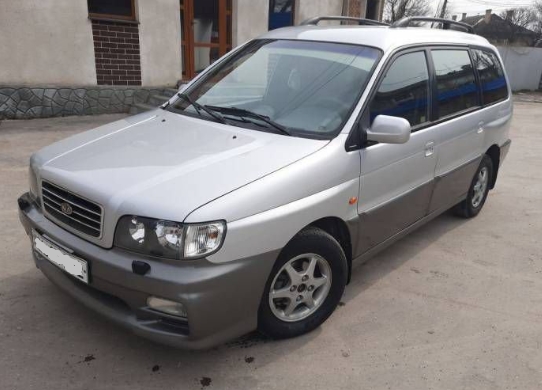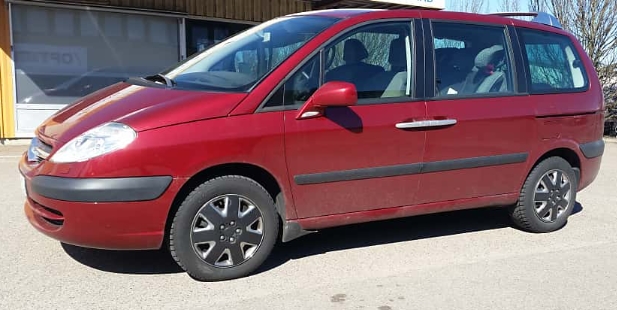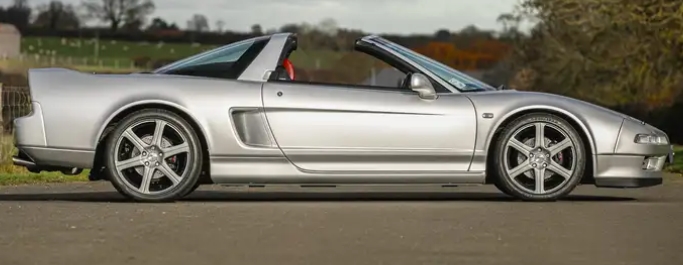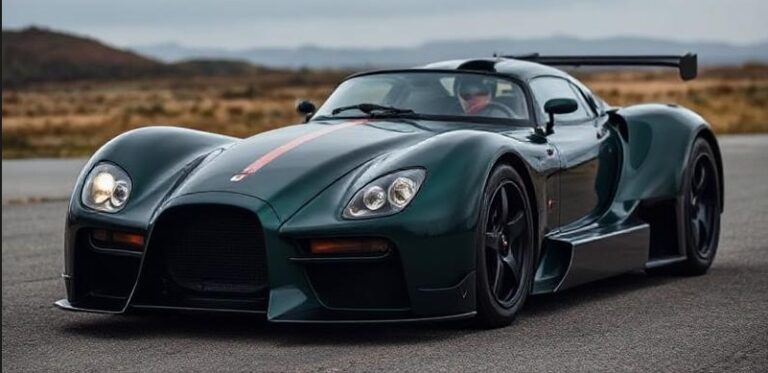Kia’s Forgotten Family Hauler: The Complete Evolution of the Kia Joice/Carstar
In the annals of automotive history, some vehicles become icons, their silhouettes instantly recognizable decades later. Others, despite serving their purpose admirably, fade into a quiet obscurity, remembered only by dedicated enthusiasts and those who once held their keys. The Kia Joice is firmly in the latter category. A product of a transformative and turbulent era for its manufacturer, the Joice was a vehicle born of necessity, a testament to pragmatic engineering and corporate synergy. To understand the story of the Kia Joice is to understand a pivotal moment in Kia’s journey from a budget-oriented domestic brand to the global powerhouse it is today. This is the evolution of Kia’s first true compact multi-purpose vehicle (MPV).
The Genesis: A Tale of Three Brands (Pre-1999)
The story of the Kia Joice does not begin within the design studios of Kia Motors. Instead, its roots are deeply intertwined with two other automotive giants: Mitsubishi and Hyundai. In the early 1990s, the Japanese automaker Mitsubishi had found global success with its second-generation Chariot (sold in many markets as the Space Wagon). This was a well-regarded, versatile, and spacious seven-seat MPV that perfectly captured the burgeoning demand for practical family vehicles.
Meanwhile, in South Korea, Hyundai had a long-standing technical relationship with Mitsubishi. Through a licensing agreement, Hyundai began producing its own version of the second-generation Chariot, which it launched in 1996 as the Hyundai Santamo. The Santamo was, for all intents and purposes, a rebadged Mitsubishi Chariot, sharing its platform, drivetrain, and core body shell.
The final piece of this complex puzzle fell into place during the 1997 Asian Financial Crisis, which severely impacted South Korea’s industrial sector. Kia Motors declared bankruptcy in 1997 and, following a bidding war, was acquired by its domestic rival, Hyundai Motor Company, in 1998. As the newly formed Hyundai-Kia Automotive Group began to streamline its operations, it sought to fill gaps in Kia’s product lineup quickly and cost-effectively. Kia lacked a compact MPV to compete with rivals like the Daewoo Rezzo. The solution was readily available within their new corporate family: the Hyundai Santamo. By leveraging the existing Santamo production line and tooling, Kia could launch its own MPV with minimal research and development costs. Thus, the Kia Joice was born.
The Launch and Initial Offering (1999–2001)
The Kia Joice officially entered production in 1999. In its home market of South Korea, it was marketed under the name Kia Carstar. For export markets, including parts of Europe and Asia, it adopted the “Joice” nameplate.
Stylistically, Kia’s designers made a concerted effort to differentiate the Joice from its Hyundai Santamo sibling, albeit with limited resources. The most significant changes were concentrated at the front and rear of the vehicle. The Joice featured a unique front fascia with a new grille, incorporating a more rounded, ovoid design language that was characteristic of Kia models at the time. The headlights were also distinct from the Santamo’s more rectangular units. At the rear, the taillight clusters were redesigned to give the Joice its own visual identity. From the side profile, however, its Mitsubishi Chariot origins were unmistakable, with the same boxy greenhouse, large windows, and practical proportions.
The Joice’s primary selling point was its interior space and versatility. It was a true seven-seater, featuring a 2-3-2 seating configuration. The third-row seats were best suited for children or for short journeys, but their presence was a major advantage in the family market. They could also be folded away or removed entirely to create a cavernous cargo area, making the Joice an exceptionally practical vehicle for its footprint.
Powertrain and Drivetrain
Throughout its initial production run, the Kia Joice was offered with a single, reliable engine option sourced from the shared Mitsubishi parts bin:
2.0-liter DOHC 16-valve inline-four gasoline engine: This engine, a variant of Mitsubishi’s renowned Sirius family, produced approximately 137 horsepower (102 kW) and 172 Nm of torque. While not a performance powerhouse, it was a robust and proven unit that provided adequate motivation for a fully-laden family vehicle. In the South Korean market (as the Carstar), an LPG (Liquefied Petroleum Gas) version of this engine was also available, offering lower running costs, a popular option for domestic consumers.
This engine could be paired with two transmission choices:
A standard 5-speed manual transmission.
An optional 4-speed automatic transmission.
All models were front-wheel drive.
Trim Levels (1999-2001)
The trim structure for the Joice was straightforward, emphasizing value for money. While exact specifications could vary slightly by market, the lineup generally consisted of two core models:
LX (Luxury): This was the entry-level model, designed to be affordable and functional. Standard features were modest by today’s standards but competitive for the era. They typically included:
14-inch steel wheels with full wheel covers.
Cloth upholstery.
Manual air conditioning.
Power steering.
A basic two-speaker cassette radio.
Manual windows and mirrors.
Driver’s side airbag (in some markets).
EX (Extra): The higher-specification model added a welcome list of comfort and convenience features, making it the more popular choice for families. Upgrades over the LX typically included:
15-inch alloy wheels.
Power windows for all four doors.
Power-adjustable side mirrors.
Front fog lights.
Roof rails.
An upgraded four-speaker audio system, often with a CD player.
Improved interior trim, sometimes with woodgrain accents.
Anti-lock Braking System (ABS) was often standard on the EX or available as a key option.
Dual front airbags were more commonly found on this trim level.
The seven-seat configuration was a defining feature and was generally standard across both trim levels in most markets.
The Mid-Cycle Refresh and Final Years (2001–2003)
Around 2001, Kia gave the Joice/Carstar a minor facelift to keep it competitive and to align its styling more closely with the brand’s evolving design identity. The changes, while subtle, were effective.
The most noticeable update was a new front grille. The previous ovoid design was replaced with a more assertive, chrome-accented grille that was a precursor to the “Tiger Nose” grille that would define the brand years later. The bumpers were subtly reprofiled, and some models received clear indicator lenses in the headlights and taillights, a popular aesthetic trend of the early 2000s.
Inside, the updates were minimal. The interior layout remained the same, but Kia introduced new upholstery patterns and fabrics to freshen up the cabin’s ambiance. The steering wheel was sometimes updated to a more modern design.
The powertrain and trim level structure remained largely unchanged through this final period. The trusty 2.0-liter engine continued its service, and the LX and EX designations were maintained. However, Kia often enhanced the value proposition by moving features from the options list to the standard equipment list. For example, ABS and passenger airbags became more common on the base LX models in its later years.
.
You’ve got that cool car, but is it resting in its own cool place?
It’s visually pleasing for the surrounding areas outside of your home to look as awesome as what’s stored inside your garage! If you desire a truly inspirational environment, you should check into these plans!

.
Production End and Legacy
Production of the Kia Joice and Carstar wound down in 2002, with sales continuing into 2003 in some markets until stock was depleted. Its discontinuation was not a result of failure, but of progress. By this time, the Hyundai-Kia Automotive Group was rapidly developing its own unique platforms and designs. The era of badge-engineering stop-gap models was coming to an end.
The Joice was directly replaced by the Kia Carens (sold as the Rondo in North America and Australia). The first-generation Carens, launched in 1999, had initially been sold alongside the Joice as a slightly smaller, more budget-focused MPV. However, the second-generation Carens, launched in 2002, was a larger, more sophisticated, and wholly Kia-developed vehicle. It rendered the aging, Mitsubishi-based Joice obsolete and represented the “new Kia”—a company capable of engineering competitive vehicles from the ground up.
The legacy of the Kia Joice is one of a crucial transitional model. It was never a bestseller, nor was it a technological trailblazer. It was, however, the right car at the right time for Kia. It allowed the brand to establish a presence in the lucrative MPV segment with minimal investment, keeping Kia dealers supplied with a relevant family product during a critical restructuring period. It served its purpose dutifully, providing thousands of families with practical, reliable, and affordable transportation.
Today, the Kia Joice is a rare sight on the roads, a quiet footnote in the brand’s dramatic rise. Yet, for those who look closely, its boxy silhouette tells a fascinating story of corporate survival, strategic partnerships, and the pragmatic first steps that paved the way for the innovative and design-led Kia we know today. It was the unsung progenitor, the forgotten family hauler that helped build a global success story.







